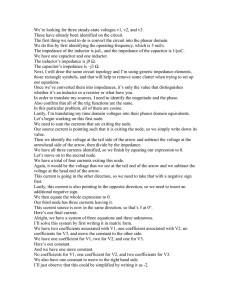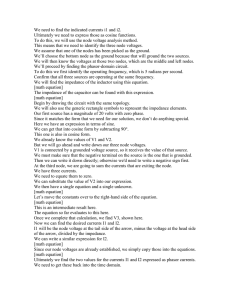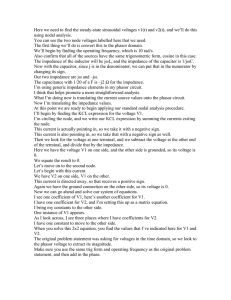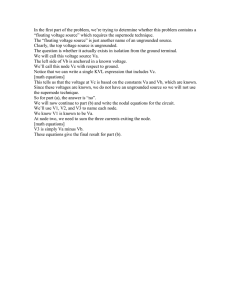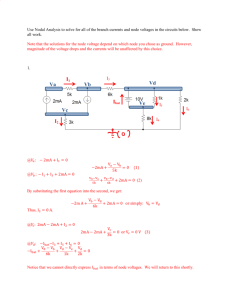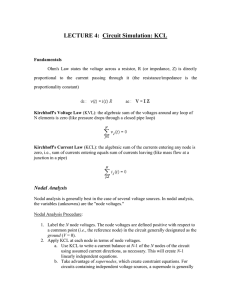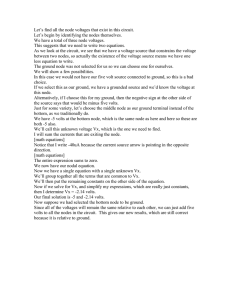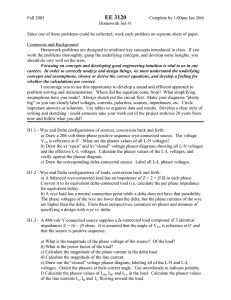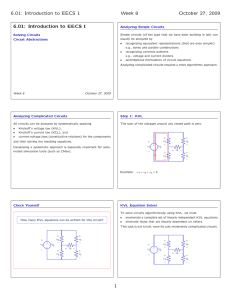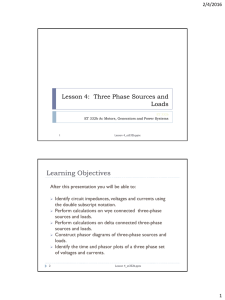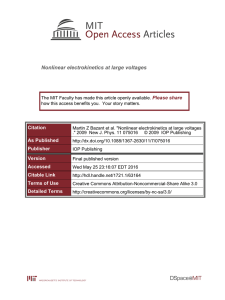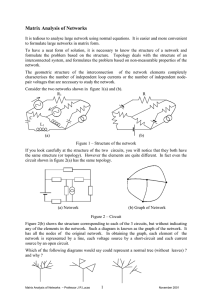We need to find the steady-state sinusoidal voltages v1 and v2,... node voltage analysis.
advertisement
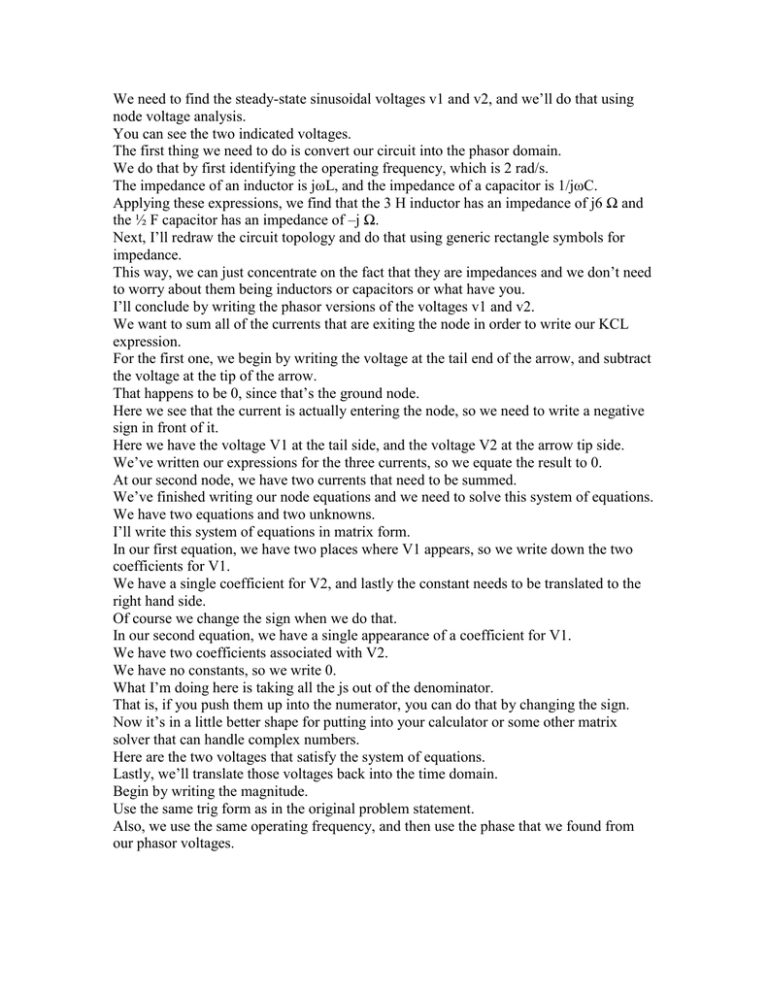
We need to find the steady-state sinusoidal voltages v1 and v2, and we’ll do that using node voltage analysis. You can see the two indicated voltages. The first thing we need to do is convert our circuit into the phasor domain. We do that by first identifying the operating frequency, which is 2 rad/s. The impedance of an inductor is jωL, and the impedance of a capacitor is 1/jωC. Applying these expressions, we find that the 3 H inductor has an impedance of j6 Ω and the ½ F capacitor has an impedance of –j Ω. Next, I’ll redraw the circuit topology and do that using generic rectangle symbols for impedance. This way, we can just concentrate on the fact that they are impedances and we don’t need to worry about them being inductors or capacitors or what have you. I’ll conclude by writing the phasor versions of the voltages v1 and v2. We want to sum all of the currents that are exiting the node in order to write our KCL expression. For the first one, we begin by writing the voltage at the tail end of the arrow, and subtract the voltage at the tip of the arrow. That happens to be 0, since that’s the ground node. Here we see that the current is actually entering the node, so we need to write a negative sign in front of it. Here we have the voltage V1 at the tail side, and the voltage V2 at the arrow tip side. We’ve written our expressions for the three currents, so we equate the result to 0. At our second node, we have two currents that need to be summed. We’ve finished writing our node equations and we need to solve this system of equations. We have two equations and two unknowns. I’ll write this system of equations in matrix form. In our first equation, we have two places where V1 appears, so we write down the two coefficients for V1. We have a single coefficient for V2, and lastly the constant needs to be translated to the right hand side. Of course we change the sign when we do that. In our second equation, we have a single appearance of a coefficient for V1. We have two coefficients associated with V2. We have no constants, so we write 0. What I’m doing here is taking all the js out of the denominator. That is, if you push them up into the numerator, you can do that by changing the sign. Now it’s in a little better shape for putting into your calculator or some other matrix solver that can handle complex numbers. Here are the two voltages that satisfy the system of equations. Lastly, we’ll translate those voltages back into the time domain. Begin by writing the magnitude. Use the same trig form as in the original problem statement. Also, we use the same operating frequency, and then use the phase that we found from our phasor voltages.
